Performance: Promise SuperTrak100
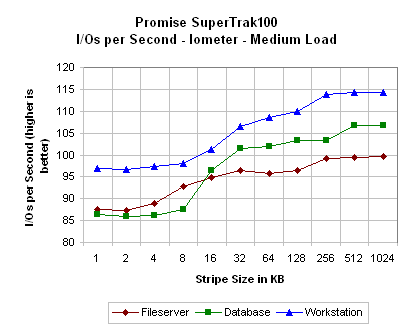
Once again we are not limited by stripe size options and we see performance hit a peak at a 256KB stripe size. After this point performance levels off on the card performs similarly as stripe size increases.
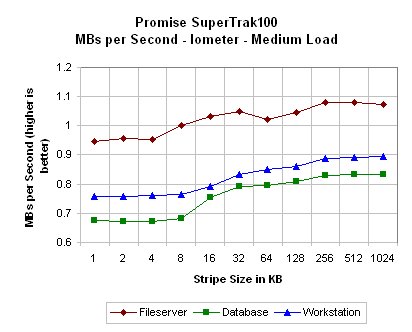
The MBs per second performance of the Promise SuperTrak100 once again levels off at around the 128 to 256KB stripe size. After this point increasing the stripe size does not increase performance.
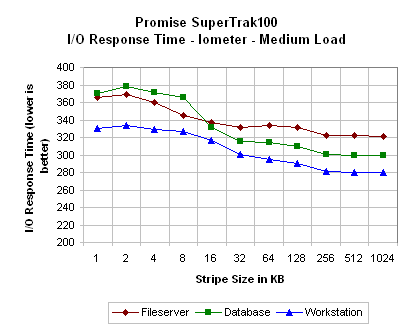
Just like all the other Iometer results on the Promise SuperTrak100, the I/O response time is best at around a 256KB stripe size. At the 128KB level, performance begins to level out but is still able to drop when moving to the 256KB stripe size.
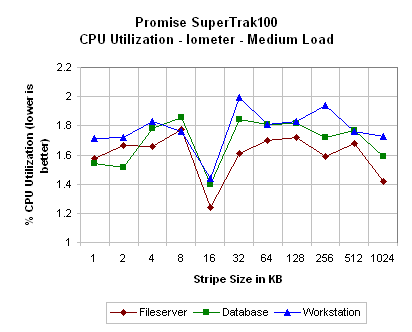
Like we saw with our other hardware RAID card, the Promise SuperTrak''s CPU utilization does not seem to be related to the card's stripe size. The only interesting part of the graph is the fact that CPU utilization decreases at the 16KB stripe size. This is likely due to variation in normal CPU utilization and not on the stripe size chosen by the Promise card.
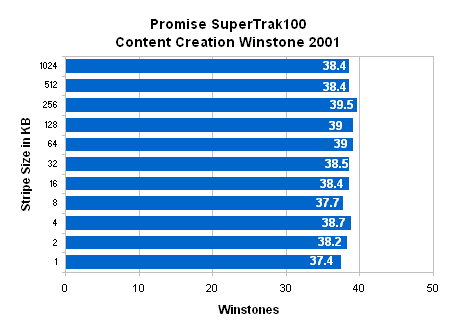
We already gathered from the Iometer scores that the Promise SuperTrak100 favored the 256KB stripe size. Our Content Creation scores verify this, as the 256KB stripe size allowed for the greatest performance in this benchmark. This stripe size performed 6% faster than the slowest stripe size of 1KB.










2 Comments
View All Comments
kburrows - Thursday, December 4, 2003 - link
Have you run any tests on any onboard RAID solutions for RAID 0 & 1? I would love to see the results posted for the new SATA RAID on the Intel 875 boards.Anonymous User - Sunday, August 17, 2003 - link
In adressing the performance of an raid array with different stripe sizes, you miss an important factor, namely the accestime of an disk. This wait time has two main couses. First the head positioning and second the rotational latency (the heads track the right trace, but position where the read start has not passed under the head). You may have to wait from 0 to (in the worst case) a full cycle.Since the disks move independently You can calculate that the average latency to get an small file is minimal when the stripe size is about an full cycle of an disk in the array (aprox. 250kB today). All other factors I do know do not reduce this. (controller overhead, transport,...)
So I think that today a minimum stripe size of 256kB should be used.